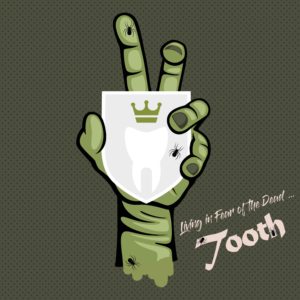 Unlike everyone’s favorite film (or TV show) du jour, teeth that lose their vitality don’t come back. Teeth, more accurately the pulp inside the tooth which carries nutrients and nerve fibers to communicate sensation, “die” for a number of reasons. This month, I’d like to look at some of those reasons and also discuss the warning signs of a “sick” tooth.
Unlike everyone’s favorite film (or TV show) du jour, teeth that lose their vitality don’t come back. Teeth, more accurately the pulp inside the tooth which carries nutrients and nerve fibers to communicate sensation, “die” for a number of reasons. This month, I’d like to look at some of those reasons and also discuss the warning signs of a “sick” tooth.
Lingering pain to temperature is a good indication that the nerve in a tooth isn’t healthy. Sometimes this is from a large cavity or a fracture. Other times it’s because of a very large filling near the nerve or trauma to the tooth. If a cavity is to blame, sweets like Halloween candy, can also cause pain. Luckily, many of these teeth can recover from and we consider them to have a reversible inflammation of the pulp.
Spontaneous pain or constant aching, often relieved by cold, is usually a sign that the pulp is too far compromised by a crack, fracture, decay, or trauma. Removing the source of the infection either by treating the inside of the tooth (the pulp) or removing the tooth is paramount to regain comfort and functionality. Teeth which have spontaneous pain, or wake people up at night, or ache chronically may
still show some signs of life like feeling cold slightly when stimulated, but they can also develop a deep throbbing sensation once the stimulus is removed.
And now for the haunting, spooky, and downright scary dead tooth. Trauma, extensive cavities, periodontal disease, fractures, deep cracks, and large restorations that get too close to the nerve (or into it) can be causes of pulpal death (necrosis). Swelling, a feeling of warmth from the area, looseness (like a zombie’s tooth), considerable discoloration, and movement are signs of a dead tooth. Treatment
to save the tooth can frequently be successful and the tooth can eventually be restored. However, many times these teeth are beyond saving, and replacement with a “bionic” implant becomes the better option.
Written by: Dr. Brandon White, owner/dentist at White Dental Studio in Ashland, OR.

Recent Comments